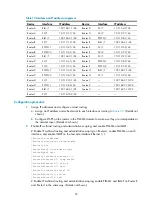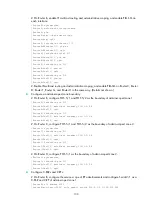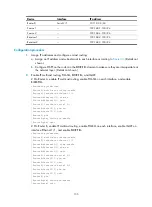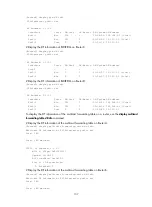
113
Analysis
•
When a router receives a multicast packet, it decrements the TTL value of the multicast packet by 1
and recalculates the checksum value. The router then forwards the packet to all outgoing interfaces.
If the
multicast minimum-ttl
command is configured on the outgoing interfaces, the TTL value of the
packet must be larger than the configured minimum TTL value. Otherwise, the packet will be
discarded.
•
If a multicast forwarding boundary has been configured through the
multicast boundary
command,
any multicast packet will be kept from crossing the boundary, and no routing entry can be created
in the PIM routing table.
•
In addition, the
source-policy
command filters received multicast packets. If the multicast data fails
to pass the ACL rule defined in this command, PIM cannot create the route entry either.
Solution
1.
Use the
display current-configuration
command to check the minimum TTL value for multicast
forwarding. Increase the TTL value or remove the
multicast minimum-ttl
command configured on
the interface.
2.
Use the
display current-configuration
command to verify the multicast forwarding boundary
settings. Use the
multicast boundary
command to change the multicast forwarding boundary
settings.
3.
Use the
display current-configuration
command to verify the multicast filter configuration. Change
the ACL rule defined in the
source-policy
command so that the source/group address of the
multicast data can pass ACL filtering.
RPs cannot join SPT in PIM-SM
Symptom
An RPT cannot be established correctly, or the RPs cannot join the SPT to the multicast source.
Analysis
•
As the core of a PIM-SM domain, the RPs serve specific multicast groups. Multiple RPs can coexist
in a network. Make sure the RP information on all routers is exactly the same and that a specific
group is mapped to the same RP. Otherwise, multicast forwarding fails.
•
If the static RP mechanism is used, the same static RP command must be executed on all the routers
in the entire network. Otherwise, multicast forwarding fails.
Solution
1.
Use the
display ip routing-table
command to verify that a route to the RP is available on each
router.
2.
Use the
display pim rp-info
command to verify that the dynamic RP information is consistent on all
routers.
3.
Use the
display pim rp-info
command to verify that the same static RP address has been configured
on all the routers in the entire network.
















































